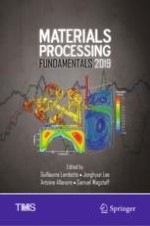2019 | OriginalPaper | Chapter
Power Consumption Model for Electrolytic Preparation of Copper Powders Using Response Surface Methodology
Authors : Hongdan Wang, Wentang Xia, Bingzhi Ren
Published in: Materials Processing Fundamentals 2019
Publisher: Springer International Publishing
Activate our intelligent search to find suitable subject content or patents.
Select sections of text to find matching patents with Artificial Intelligence. powered by
Select sections of text to find additional relevant content using AI-assisted search. powered by
